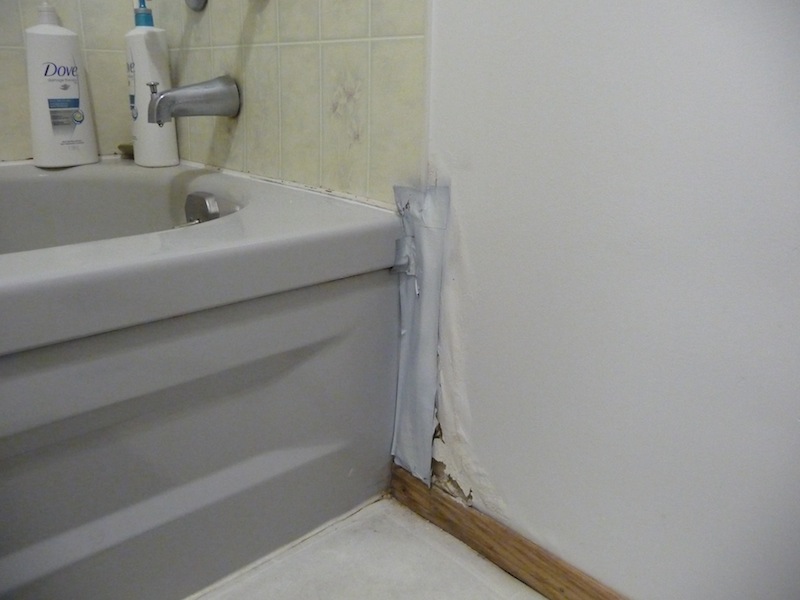Exactly how to Prevent a Water Damaged Bathroom
Exactly how to Prevent a Water Damaged Bathroom
Blog Article
How do you really feel when it comes to Looking for Signs of Water Damage in the Bathroom?

The restroom is very vulnerable for damp buildup and also potential water damage as a result of the frequent use of water in it. This post offers easy assessment techniques to help finding water damages threats.
The frequent use of water in the washroom makes it incredibly prone for moist build-up and also potential water damage. By evaluating it routinely, you can decrease water relevant damages.
The complying with collection of inspections is simple to do and also ought to be done when in every 3 months in order to keep your restroom healthy and to avoid prospective water problems caused by the bathtub, the shower, pipeline joints and also plumbing, sinks, closets, and the bathroom
Do not disregard executing these inspections and be extensive while doing them. Remember that these simple inspections can save you a lot of cash by supplying very early signs for water damage
Sinks and Cabinets
Sinks and cupboards are subjected to wetness and also moisture day-to-day and also are often overlooked. Examine frequently under the sink as well as on the counter top over it. Fix any kind of drip in the catch as it might recommend drainpipe issues. Take a look around the sink, sluggish draining pipes may show an obstructed drainpipe. Replace sink seals if they are broken or loose.
Bathtub and also Shower
The shower and also tub need special attention and also upkeep. Inspect the tiles and change if split. Make certain that there is no missing grout in between the ceramic tiles. Examine and change split caulking at joints where the walls meet the flooring or the tub. Blocked drains and also pipelines problems will certainly stop the tub from drying as well as may show significant issues below the bathtub. Consult with a specialist quickly to avoid structural damage. Take notice of stainings or soft areas around the bathtub wall surfaces as they may show an internal leakage.
Plumbing
Signs for water damage are hard to find because the majority of pipelines are installed inside the wall surfaces.
Pay special focus to flooring and also walls moisture as well as stains as they might indicate an unseen plumbing issue. Examine wetness degrees in adjoining areas also.
The Toilet
The bathroom is a vulnerable water joint. Inspect the water lines and look for leakages around the bathroom seat, in the tube, as well as under the water storage tank. If you detect any type of signs of wetness on the flooring around the bathroom, look for leaks in the toilet edge and storage tank seals.
Realize that hanging bathroom dish deodorants boosts the opportunities for blockages.
Water Damage Signs In The Bathroom To Avoid Cleanup
Musty smell
This is one of the easiest signs to catch because musty smells are so odorous. The damp, earthy, moldy smell should be a big red flag. The smell will develop when moisture gets trapped in surfaces, and begins to facilitate mold growth. Leaking pipes under cabinets, inside walls, and behind shower fixtures will cause moisture to stay trapped and not dry, which will lead to mold growth and spread. As soon as you notice any musty smells in your bathroom, have it checked for hidden water damage and cleanup signs.
Visible mold
If the smell isn’t there to give it away, sometimes you will actually see mold growth. Finding mold in your bathroom is a serious problem, because mold is very harmful to your health. By the time mold growth is visible, it also means that water damage has already occurred and been present for some time. The only way the mold problem can be resolved is to find the source of the moisture and get it stopped. To safely and adequately remove mold, you need to have professionals handle the remediation. Do not waste any time in getting mold problems addressed, fixed, and sanitized so that you can protect you and your family from the many respiratory symptoms caused by mold exposure.
Damaged floors
Bathroom floors should be able to withstand some exposure to water while still remaining in good condition. However, when excess exposure or water leaks occur, they will begin to damage even the most water-resistant flooring. If you notice any cracking, bubbling, staining, or warping on your bathroom floors, there is probably a water leak somewhere causing the distortion. If you notice areas of the floor have become softer, or even have a spongy feeling, there is probably damage to the subfloor. Subflooring is typically made up of plywood. When plywood is exposed to water or moisture, it will absorb it. Once it has become saturated, the weight of the excess water will cause the wood to swell and soften. Check the floors in your bathroom frequently to catch any of these sings before they lead to damaged subflooring.
Changes on walls
When water leaks behind walls, it will cause changes in the drywall. Peeling plaster, blistering paint, and soggy wallpaper are all good indicators that excess water is building up behind the wall. Water leaking behind drywall will cause it to swell and be soft to the tough. If you start to notice gaps along the trim of your walls, or where tile meets the wall, it could also be a strong indicator that there is a leak behind the wall. Any changes, distortion, or damage on the walls should be evaluated as soon as you notice it to prevent further water damage and cleanup.

I discovered that article on How to Fix a Water Damage Bathroom when surfing around the internet. Enjoyed reading our blog entry? Please share it. Let other people find it. I am grateful for your time. Visit again soon.
Call Us Today Report this page